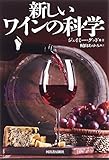{mxnet} R package from MXnet, an intuitive Deep Learning framework including CNN & RNN
Actually I've known about MXnet for weeks as one of the most popular library / packages in Kaggler, but just recently I heard bug fix has been almost done and some friends say the latest version looks stable, so at last I installed it.
MXnet is a framework distributed by DMLC, the team also known as a distributor of Xgboost. Now its documentation looks to be completed and even pre-trained models for ImageNet are distributed. I think this should be a good news for R-users loving machine learning... so let's go.
Read moreCan multivariate modeling predict taste of wine? Beyond human intuition and univariate reductionism
At a certain meetup on the other day, I talked about a brand-new relationship between taste of wine (i.e. professional tasting) and data science. This talk was inspired by a book "Wine Science: The Application of Science in Winemaking". Below is its Japanese edition.

- 作者: ジェイミーグッド,Jamie Goode,梶山あゆみ
- 出版社/メーカー: 河出書房新社
- 発売日: 2014/11/12
- メディア: 単行本
- この商品を含むブログを見る
For readers who can't read Japanese, I summarized the content of the talk in this post. Just for your information, I myself am a super wine lover :) and I'm also much interested in how data science explain taste of wine.
In order to run analytics below, I prepared an R workspace in my GitHub repository. Please download and import it into your R environment.
(Note: All quotes from Goode's book here are reversely translated from the Japanese edition and it may contain not a few difference from the original version)
Read moreBayesian modeling with R and Stan (5): Time series with seasonality
In the previous post, we successfully estimated a model with a nonlinear trend by using Stan.
But please remember this is a time series dataset. Does it include any other kind of nonlinear components? Yes, we have to be careful for seasonality. Actually when I generate the dataset, I added a seasonal component with a 7 days cycle.
Then we have to change the model as follows.